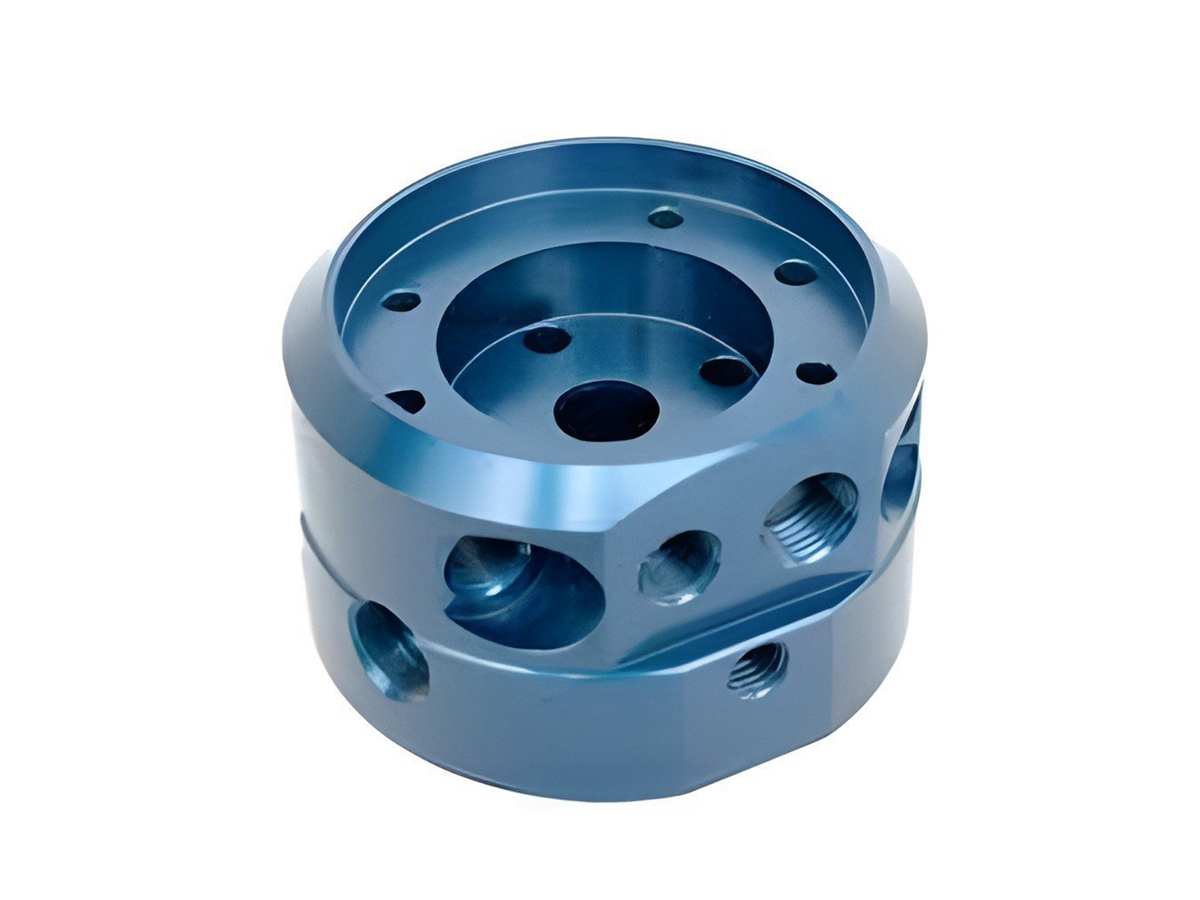Custom CNC Machining Aluminum Robotic Sensor Housings With Anodizing
Introduction
Robotic sensor housings require precision manufacturing techniques to ensure sensors function reliably under demanding operational conditions. Custom CNC machining aluminum has emerged as a preferred method, offering superior dimensional accuracy, an excellent strength-to-weight ratio, and exceptional customization capabilities. Aluminum’s characteristics, such as lightweight construction, corrosion resistance, and thermal conductivity, make it optimal for robotic sensor housings in automation, aerospace, and automotive industries.
Manufacturers produce robust, precise, and aesthetically appealing sensor housings by integrating advanced CNC machining techniques with high-quality aluminum and anodizing processes. Anodizing further enhances these components, providing improved corrosion resistance, electrical insulation, and a durable surface finish, extending operational lifespan and reliability in robotic environments.
CNC Machining Processes for Aluminum Sensor Housings
Several CNC machining processes achieve precision and complexity in aluminum sensor housings:
CNC Milling: Employs computerized controls and multi-axis movements to produce precise shapes and complex geometries essential for intricate robotic sensors.
CNC Turning: Primarily used for symmetrical and cylindrical components, offering accuracy and repeatability critical for sensor enclosures.
Precision Drilling: Essential for creating accurate and uniform holes required for sensor mounting, fastening, and internal component placements.
These precise manufacturing processes are crucial for maintaining sensor accuracy and reliability in demanding robotic applications.
Aluminum as a Preferred Material
Aluminum alloys commonly used in robotic sensor housings include:
6061 Aluminum: Excellent machinability, high strength-to-weight ratio, and weldability make this alloy ideal for general robotic applications.
7075 Aluminum: Superior strength, toughness, and fatigue resistance make it ideal for high-performance robotic sensors in challenging environments.
5052 Aluminum: High corrosion resistance and formability suit sensors exposed to harsh external conditions.
Each alloy offers distinct properties that meet specific robotic industry demands, enhancing performance and durability.
CNC Machining Aluminum: Challenges and Solutions
Aluminum’s machinability makes it popular for CNC processes but also introduces unique challenges:
Material Softness: Aluminum's softness can cause material adhesion to cutting tools. Solutions involve carefully selected cutting parameters and specialized tooling.
Heat Management: High thermal conductivity demands precise temperature management during machining to avoid distortion. Implementing appropriate cooling techniques and cutting fluids significantly improves outcomes.
Surface Finish Considerations: High-quality surface finishes require optimized machining parameters and careful tooling selection, ensuring smooth, defect-free sensor housing surfaces.
By addressing these challenges, manufacturers achieve consistently precise, high-quality aluminum robotic sensor components.
Anodizing Process and Benefits
Anodizing is an electrochemical surface treatment enhancing aluminum sensor housings:
Corrosion Resistance: Produces a durable oxide layer that protects sensor housings from environmental damage, prolonging their functional lifespan.
Wear Resistance: Enhances surface hardness, significantly reducing wear and tear during operation.
Electrical Insulation: Provides non-conductive surfaces, essential for reliable electronic sensor performance.
Aesthetic Appeal: Offers customizable colors, increasing branding potential and improving product aesthetics.
Anodized aluminum surfaces thus provide an ideal combination of durability, protection, and visual enhancement, essential for high-quality robotic sensor housings.
Application in Robotic Sensor Technology
Custom CNC machined aluminum housings play a critical role in robotic sensors across sectors:
Industrial Automation: Precision aluminum enclosures enhance sensor reliability and accuracy in motion detection, positioning, and control automation systems.
Aerospace and Defense: Robust aluminum sensor housings endure extreme temperature, pressure, and vibration, ensuring performance in navigation, control, and safety systems.
Automotive Robotics: Aluminum housings support advanced sensor technologies in autonomous driving and vehicle monitoring, offering consistent durability and precision.
These industries benefit significantly from aluminum's combination of lightweight strength, precision machining capabilities, and anodizing enhancements.
Advantages and Limitations
Advantages:
Exceptional precision and dimensional accuracy due to CNC machining.
Superior strength-to-weight ratio ideal for robotic applications.
Enhanced corrosion resistance achieved through anodizing.
Wide range of applications and excellent customizability.
Limitations:
Higher initial setup and tooling costs may impact overall production economics.
Requires careful heat management to maintain precision.
Uniform anodizing can be challenging on complex geometries.
Despite these limitations, the benefits far outweigh the drawbacks, making CNC machined aluminum sensor housings a compelling solution.
Frequently Asked Questions (FAQs)
Why is anodizing essential for aluminum robotic sensor housings? Anodizing improves corrosion resistance, wear resistance, electrical insulation, and aesthetics, critical for durability and sensor reliability.
What aluminum grades offer the best performance for robotic applications? Aluminum alloys such as 6061, 7075, and 5052 provide optimal performance, balancing strength, machinability, and corrosion resistance.
How does CNC machining influence the reliability of robotic sensor components? CNC machining ensures precision, consistency, and dimensional accuracy, directly enhancing sensor reliability and performance.
What machining considerations are critical for maintaining sensor accuracy? Material selection, temperature management, tooling precision, and optimized machining parameters are essential for maintaining sensor accuracy.
Can CNC machining accommodate highly complex sensor housing designs? Yes, advanced multi-axis CNC machining processes readily accommodate complex geometries, enabling sophisticated sensor housing designs.

